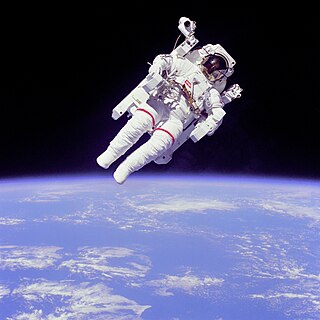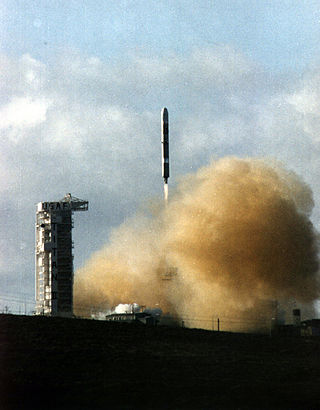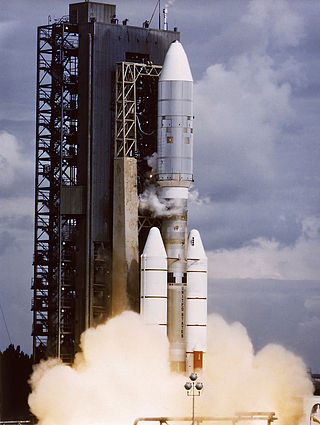
STS-41-B was NASA's tenth Space Shuttle mission and the fourth flight of the Space ShuttleChallenger. It launched on February 3, 1984 and landed on February 11, 1984, after deploying two communications satellites. It was also notable for including the first untethered spacewalk.

This article outlines notable events occurring in 2006 in spaceflight, including major launches and EVAs. 2006 saw Brazil, Iran, and Sweden all get a national into space for the first time.

This article outlines notable events occurring in 2005 in spaceflight, including major launches and EVAs. 2005 saw Iran launch its first satellite.

This article outlines notable events occurring in 2003 in spaceflight, including major launches and EVAs.

This article outlines notable events occurring in 2002 in spaceflight, including major launches and EVAs.

This article outlines notable events occurring in 2001 in spaceflight, including major launches and EVAs.

This article outlines notable events occurring in 2000 in spaceflight, including major launches and EVAs.

This article outlines notable events occurring in 1996 in spaceflight, including major launches and EVAs.

This article outlines notable events occurring in 1995 in spaceflight, including major launches and EVAs.

The following is an outline of 1981 in spaceflight.
The following is an outline of 1983 in spaceflight.
The following is an outline of 1985 in spaceflight.

The year 1986 saw the destruction of Space Shuttle Challenger shortly after lift-off, killing all seven aboard, the first in-flight deaths of American astronauts. This accident followed the successful flight of Columbia just weeks earlier, and dealt a major setback to the U.S. crewed space program, suspending the Shuttle program for 32 months.

This article outlines notable events occurring in 1994 in spaceflight, including major launches and EVAs.

The following is an outline of 1993 in spaceflight.

The following is an outline of 1992 in spaceflight.

This was the final year of the Soviet Union, and thus the end of the Cold War competition between the two space superpowers. The number of launches subsequently declined in the 1990s, and 2018 was the first year since 1990 to have more than 100 orbital launches.

Spaceflight in 1977 included some important events such as the roll out of the Space Shuttle orbiter, Voyager 1 and Voyager space probes were launched. NASA received the Space Shuttle orbiter later named Enterprise, on 14 January. This unpowered sub-orbital space plane was launched off the top of a modified 747 and was flown uncrewed until 13 August until a human crew landed the Enterprise for the first time.















